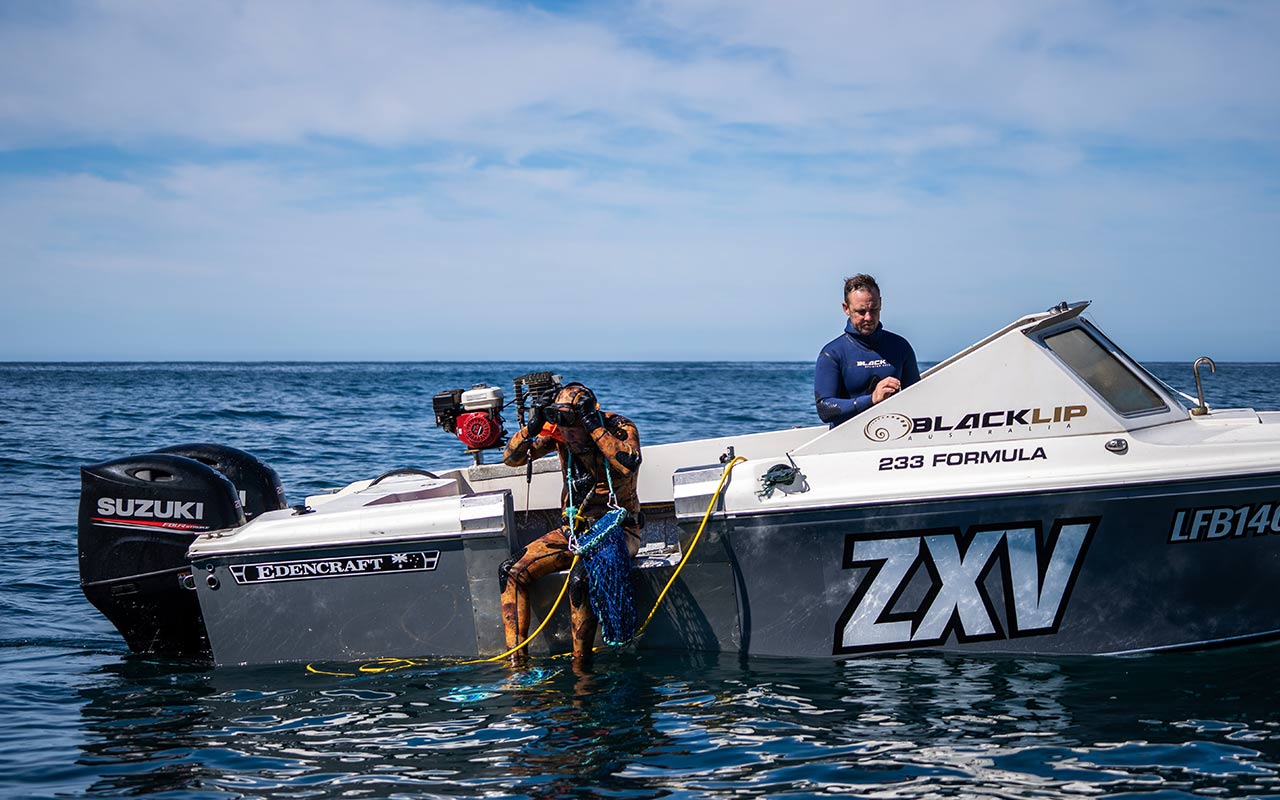Blacklip Performance Diving wetsuits – what you should know.
The Basics
Types of Blacklip Performance Diving Wetsuits
Wetsuits are made out of an spongey, insulating material called Neoprene. Neoprene wetsuits are available in different thicknesses to ensure optimal performance in different environments. The thicker the Neoprene, the more insulation it will give the diver.
Styles of Blacklip Performance Diving Wetsuits
There are a variety of different length wetsuits depending on your preference. From two piece spearfishing suits to full length steamer wetsuits.
Fit of Blacklip Performance Diving Wetsuits
When fitting a Blacklip performance diving wetsuit the aim is to ensure that only a thin layer of water can make its way into the suit between the Neoprene and your body – this water swiftly heats up and acts as an insulating layer. Your wetsuit should fit quite snug over the body to allow this water to enter, but tight enough to prevent this water from flowing back out.
Colours of Blacklip Performance Diving Wetsuits
Camo is a popular colour among spear fisherman, offering adequate camouflage in order to get as close to their target as they possibly can. There are no specific requirements for divers, thus scuba divers and some free divers tend to wear more colourful and vibrant pieces when out in the water.

Why Should You Choose a Blacklip Performance Diving Wetsuit?
When diving, it’s important to regulate and maintain your body heat as it can decrease much quicker in water than on land. If your temperature is not maintained, the body will use a large amount of it’s energy to bring your temperature back up – this is where the wetsuit comes into play.
Blacklip Performance Diving Wetsuits are made out of Japanese Yamamoto 39 neoprene which is a lightweight and flexible material packed full of air bubbles. These air bubbles assist in trapping the diver’s body warmth offering insulation around the body while the surrounding water temperature is considerably lower. Blacklip Performance Diving Wetsuits come in varying Neoprene thicknesses depending on the divers’ susceptibility to the cold temperatures and the surrounding water temperatures. Different seasons and environments will play a key role in deciding what the best wetsuit thickness and style will be for you.
A general guide to wetsuit thicknesses
- 20-22 Celsius requires a 8-9mm Neoprene Thickness.
- 22-25 Celsius requires a 4-7mm Neoprene Thickness.
- 25-29 Celsius requires a 1 – 3mm Neoprene Thickness.
Important to note that this is based on the average diver and not a definitive guide. It ultimately comes down to personal preference as some divers may feel the effects of the cold temperatures compared to others.
A breakdown of wetsuit styles
- Steamers/Full Suits – are on piece, full length garments covering all the way to your neck, ankles and wrists.
- Shorties – are also one piece wetsuits but include short legs and arms. They are the more popular choice in warmer waters or among surfers as they allow added mobility around key joint areas when compared to a full length steamer.
- Semi-Dry Suits – are thicker wetsuits generally made from 7mm Neoprene and up. They are not completely dry such as a dry suit; however, they feature reinforced seals at the neck, wrist and ankles to prevent water from seeping out therefore insulating the body for extended periods of time.
- Dry Suits – have been designed where water temperatures are generally between 15c to -2c. Water is unable to enter through the suit unlike most wetsuits via seals at the wrists and neck. Dry suits can be formed out of Neoprene or fabric and insulates the body by maintaining pockets of air between the body and cold water.
How to get the perfect fit in your Blacklip Performance Diving Wetsuit.
Wetsuit sizes vary from different manufacturers, so it’s worth checking Blacklip Performance Diving’s wetsuit size guide to match your measurements. However, the most essential thing to remember is; your wetsuit needs to fit snugly, with no loose areas. This does not mean it has to fit so tight that it restricts all mobility and compresses on the body to the point where it is uncomfortable to wear. More so it should fit tight like a lycra swimsuit or shorts.
When trying on a Blacklip diving wetsuit, ensure the suit is pulled up into all areas of the body. For example; if you leave the knee area saggy, the suit will pull and feel tight on your shoulder area. Pulling the suit up into all areas will make your diving experiences much more comfortable and enjoyable as a result.
Blacklip Performance Diving has wetsuits for all divers, from free divers to scuba divers through to commercial divers, along with a range of other neoprene products. Get yourself into a Blacklip Performance Diving Wetsuit and experience the quality for yourself, we assure you that you will be amazed. All Blacklip products come with a 1 year warranty on faulty seam stitching.
We here at Blacklip Performance Diving have designed wetsuits that are more like a second skin than a wetsuit. Many Abalone divers along with free divers, while using the suits, claim that these are the best wetsuits they have ever used. If you have any questions or enquiries about Blacklip Performance Diving Australia products email us via our contact form >